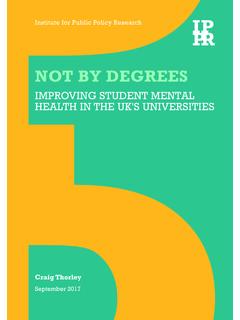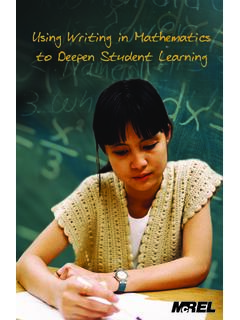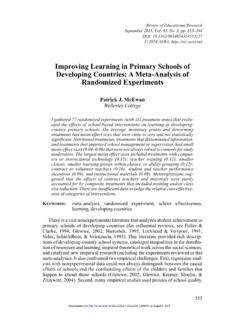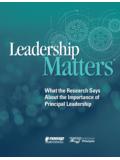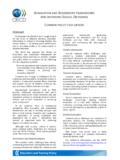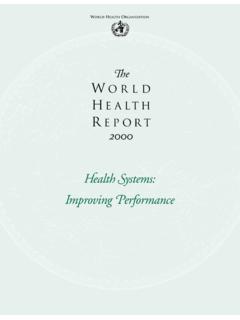Transcription of IMPROVING READING COMPREHENSION AND FLUENCY …
1 IMPROVING READING COMPREHENSION AND FLUENCY THROUGH THE USE OF. GUIDED READING . Kari A. Gabl Kristi L. Kaiser Julie K. Long Jessica L. Roemer An Action Research Project Submitted to the Graduate Faculty of the School of Education in Partial Fulfillment of the Requirements for the Degree of Master of Arts in Teaching and Leadership Saint Xavier University & IRI/Skylight Professional Development Field-Based Masters Program Chicago, Illinois May, 2007. i ABSTRACT. This action research report describes a program to increase students' READING COMPREHENSION and FLUENCY through the use of guided READING . The targeted population consists of second and fourth grade students in a northwest suburban area of a large city located in the Midwest.
2 The problems of low READING COMPREHENSION and FLUENCY scores were documented through the use of district provided COMPREHENSION and FLUENCY assessments and teacher surveys. The literature showed multiple factors that contribute to the problem of low READING FLUENCY and COMPREHENSION scores. These factors included individual students, school curriculum and classroom environment, teacher training, and family involvement. Literature review suggested the following solutions to improve READING COMPREHENSION and FLUENCY : increasing family involvement, teaching thinking skills, creating flexible groups in the classroom, utilizing a meaningful READING curriculum, IMPROVING teacher education, and setting up a positive classroom environment.
3 These researchers focused on the use of leveled texts, graphic organizers, and flexible groups during guided READING . The analysis of student achievement data was determined by looking closely at district FLUENCY and COMPREHENSION assessment scores as well as teacher surveys. The teacher researchers created lessons in which the students were working in READING centers and in small teacher-lead flexible guided READING groups. The students also completed activities that improved their READING COMPREHENSION and FLUENCY . After completing the sixteen-week study the students were assessed using district provided COMPREHENSION and FLUENCY assessments.
4 In addition to these assessments, a rubric was used to evaluate each of the graphic organizers completed by the students. Post intervention analysis of the district provided COMPREHENSION assessment, district provided FLUENCY assessment, and rubric for the independent use of graphic organizers showed that both the second and fourth grade students at Sites A and B increased in the areas of READING COMPREHENSION and FLUENCY . All in all the interventions of guided READING with leveled texts, flexible grouping, and graphic organizers yielded positive results for the second and fourth grade students at both Sites A and B.
5 Ii ACKNOWLEDGEMENTS. iii TABLE OF CONTENTS. CHAPTER 1 PROBLEM STATEMENT AND CONTEXT ..1. General Statement of the Problem ..1. Immediate Problem Context ..1. Surrounding Community ..6. National Context of the Problem ..9. CHAPTER 2 PROBLEM DOCUMENTATION ..16. Problem .. 16. Probable Causes ..22. CHAPTER 3 THE SOLUTION STRATEGY ..28. Literature Review ..28. Project Objectives and Processes .. 32. Project Action Plan ..33. Methods of Assessment .39. CHAPTER 4 PROJECT RESULTS ..41. Historical Description of the Intervention ..41. Presentation and Analysis of Results ..46. Conclusions and Recommendations ..55. REFERENCES.
6 65. APPENDICES ..68. 1. CHAPTER 1. PROBLEM STATEMENT AND CONTEXT. General Statement of the Problem Students in grades 2 and 4 perform below grade level expectancy on READING tasks that relate to COMPREHENSION and FLUENCY . Evidence of this problem includes the following: district provided COMPREHENSION assessment scores, district provided FLUENCY assessment scores, and a teacher survey on the issues of COMPREHENSION and FLUENCY in the classroom. Immediate Problem Context This action research was conducted at two elementary school buildings. Both sites were located in middle class school districts within the northwest suburbs of a major Midwestern city.
7 Conducting the research throughout this study at Site A were three teachers; one who teaches second and two who teach fourth grade. At Site B one second grade teacher conducted the research. Site A. Site A is an elementary building within a district of 12 schools, nine are elementary and three are middle schools. Site A is a two story brick building which includes a main office, art room, music room, orchestra and band room, gymnasium, multipurpose room (cafeteria), technology lab, library, faculty lounge, conference room, and 24 classrooms. The classrooms are 2. equipped with one , two computers, one telephone, one large chalkboard, four bulletin boards, and an assortment of shelves.
8 Site A opened its doors in September of 1969. In May of 1997 Site A was rededicated to its surrounding community after extensive renovations to many of its facilities, including its office, library, and faculty lounge. As a result of these renovations it received the American School & University Architectural Award for Outstanding Buildings. The administrative staff at Site A includes one principal and one assistant to the principal who is also the Library Media Center ( ) director. Site A also receives the services of one part time psychologist, two social workers, a speech pathologist, and a part time occupational therapist.
9 The certified staff at Site A includes two kindergarten teachers, one full time and one part time. There are three first grade teachers, three second grade teachers, four third grade teachers, four fourth grade teachers, three fifth grade teachers and one full time learning coach. Additionally, Site A employs two learning disabled (LD) resource teachers, one learning disabled resource aid, two self contained behavior disorder (BD) teachers, and two self contained behavior disorder aids. There are two part time music teachers, one part time band and orchestra teacher, one full time physical education teacher, one part time art teacher, and one full time technology teacher at Site A.
10 The school also utilizes various parent volunteers that have been trained as READING specialists. These parents primarily work with first and second grade students. Per the State School Report Card, there were 491 teachers within the district of Site A. The ethnicity of the district's teachers is as follows: White, 0% Black, Hispanic, Asian/Pacific Islander and 0% Native American. The percentage of male and female teachers was and respectively. The average experience level of teachers within the district was years and of the teachers have earned post baccalaureate degrees. The 3. average teacher's salary for the school district is $64, Site A was managed by one female administrator.










